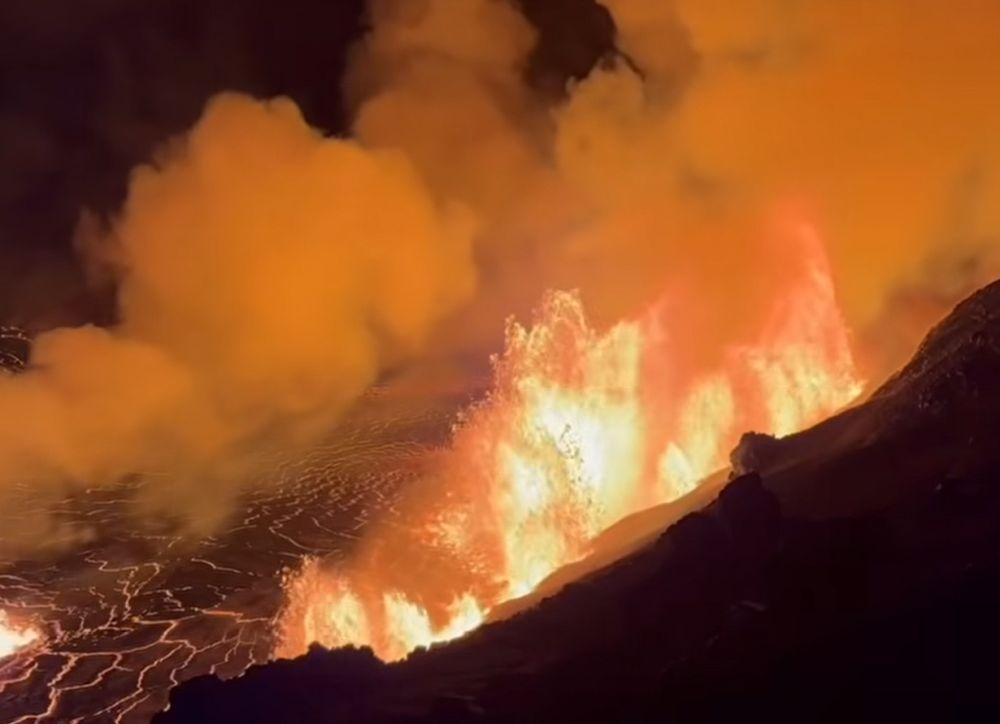
Kīlauea Volcano Ends Year With Impressive Lava Fountains
As the year comes to a close, the Kīlauea volcano has ended 2024 with an impressive display of lava fountains. According to recent webcam images shared by the United States Geological Survey (USGS), a line of fissures has erupted, feeding a flow within the summit caldera.
The USGS Hawaiian Volcano Observatory has elevated Kīlauea’s volcano alert level from ADVISORY to WARNING and its aviation color code from YELLOW to RED as this eruption and associated hazards are evaluated. Webcam images show a stunning display of lava fountains feeding a flow within the summit caldera, a unique spectacle that has left scientists and observers alike in awe.
The eruption is occurring within a closed area of Hawai’i Volcanoes National Park, an area that is heavily monitored by scientific instruments from ground sensors to tools that analyze the gases released from the volcanic vents. The volcano’s impressive monitoring system allows for real-time tracking of gas levels, including high levels of volcanic gases like water vapor, carbon-dioxide, and sulfur-dioxide.
These gases pose a significant concern as they can have far-reaching effects downwind of Kīlauea, potentially causing negative health impacts, damaging crops, and creating acid rain. The volcano’s unique composition allows for the possibility of explosive eruptions, which could further exacerbate these hazards.
It is worth noting that this eruption style is generally dominated by effusive activity, with lava pouring out from fissures. However, Kīlauea has a history of impressive explosive eruptions in the past, including an event in May 1924 where over 60 explosions occurred, sending fragments ranging from volcanic ash to large blocks the size of cars into the sky and falling back around the summit caldera.
In the last 35 years, Kīlauea volcano has erupted in two places: at the summit caldera and at the Pu‘u‘ō‘ō crater on the eastern rift zone. In May 2018, a large lava flow destroyed more than 700 residences on its path to the sea.
What sets Kīlauea apart from other volcanoes is its unique “stomp-rocket mechanism.” During an effusive eruption characterized by lava fountains and flows, the magma reservoir is gradually emptied. The rocky roof above it—the ground within the caldera at the volcano’s summit—now lacking supports suddenly collapses, quickly increasing the pressure in the reservoir and squeezing gas and bits of rubble through the vents in Kīlauea’s crater.
This mechanism was compared to a stomp-rocket toy, where stepping on an air bag connected to a hose launches a projectile into the air.
Source: www.forbes.com


